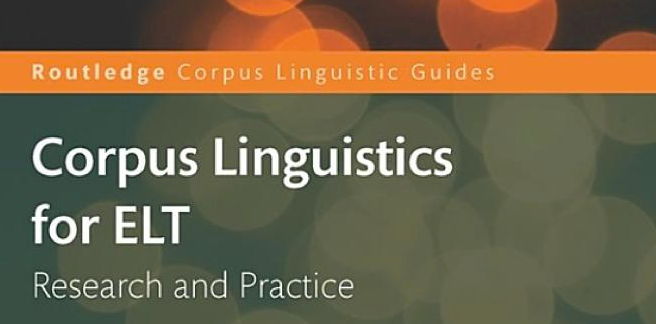Corpus Linguistics for ELT: Research and Practice
Ivor Timmis
From the introduction:
The challenge of fostering a fruitful relationship between corpus linguistics and ELT was clearly set out by Conrad (2000: 556):
Corpus grammarians must strive to reach more audiences that include
teachers and must emphasize concrete pedagogical applications … In fact,
the strongest force for change could be a new generation of ESL teachers who
were introduced to corpus-based research in their training programs [and]
have practiced conducting their own corpus investigations and designing materials based on corpus research.
Indeed, this comment by Conrad encapsulates the main aim of this book: to help move corpus linguistics from what Römer (2012) terms its ‘minority sport’ status in language teaching to a point where the ability to carry out and interpret corpus research is seen as a normal part of an English language teacher’s repertoire.
Familiarity with corpus research and practice should be a standard part of an English language teacher’s toolkit, I would argue, because most people in ELT will at some time have had thoughts like these:
• How many words do my learners need to learn?
• Why is everyone talking about lexical chunks and collocations?
• Do my students really need this grammar point?
• Which words should I use to exemplify this structure?
• Am I teaching my learners language they will need to use when they speak the language?
• Does the grammar explanation in the coursebook really reflect how we use this structure?
• What vocabulary do my English for dentistry students need to get their teeth into?
If you have had questions like these, this book is designed to help you to answer them by consulting corpora and corpus-informed literature. It is also designed to help you to generate and investigate similar questions. It is, however, important to keep corpora in perspective throughout this book.
The argument presented here is that corpora are a resource and a reference source and, as is the case with all resources, pedagogic judgement is vitally important in determining how and when
they are deployed to best effect.
The book does not assume prior knowledge or experience of corpus research; nor does it assume any technical expertise. Technophobes can relax: contemporary corpus interfaces and corpus software are user-friendly and often include tutorial packages. The tasks in this book will help to familiarise readers with publicly available user-friendly corpora such as the British National Corpus hosted at
http://corpus.byu.edu/bnc/
